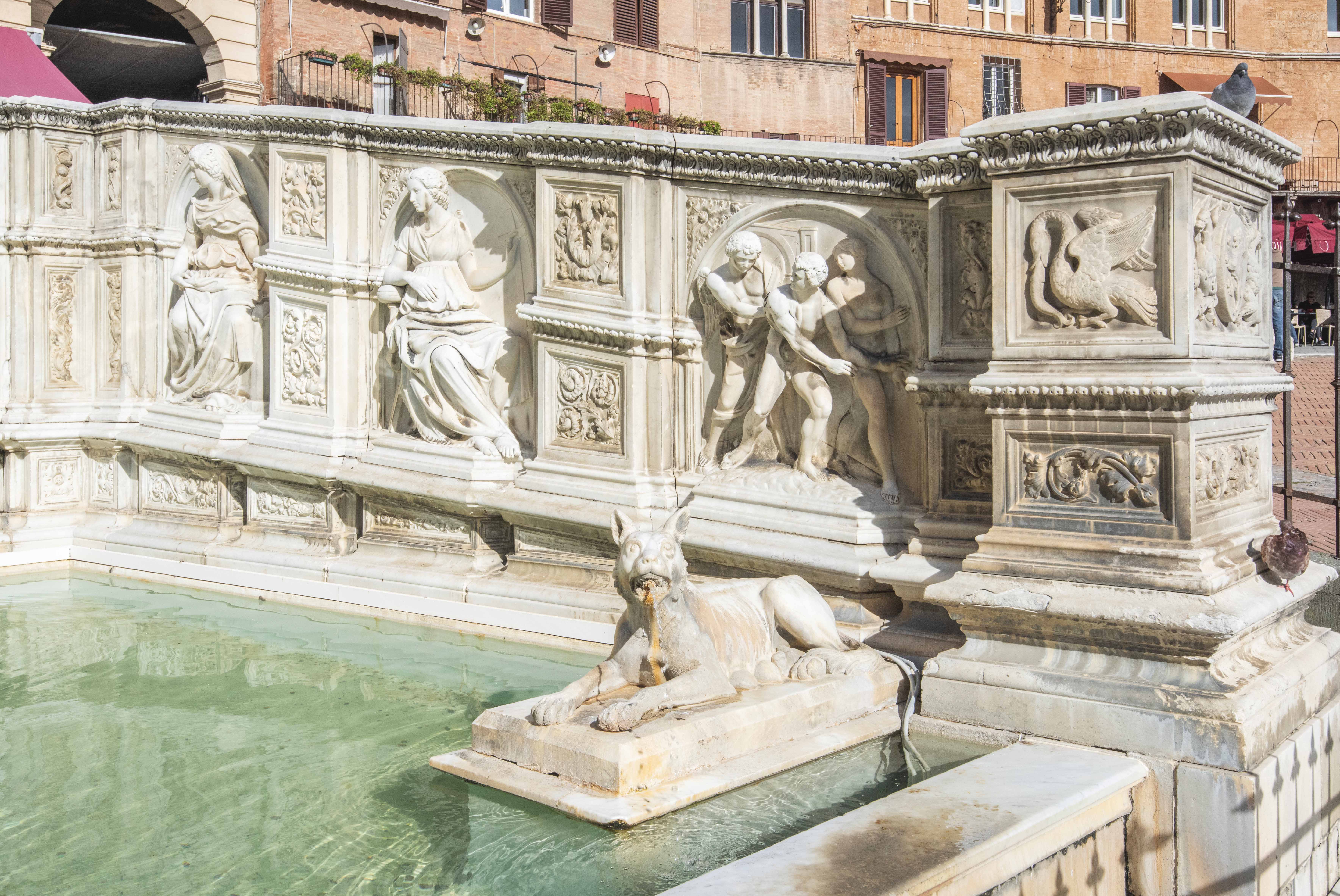3.8 Jobs with water
Washerwomen, bottinieri (aqueduct-men)… extinct trades, or nearly, but they were important for Siena. For centuries around the city’s fountains, which are the outlets of Siena’s bottini (the special aqueducts that provided Siena with water until 1919), you could find people doing their hard, tiring work there. The washerwomen, for example, who spent entire days there fighting against cold, weariness and lack of water, either for pay or for their families. For generations, the fountains were where they socialised, gossiped and bickered. A vanished world: today the voices at the fountains are gone.

Fonte Gaia
For centuries Siena battled a lack of water, as there are no big rivers or lakes near the city. In 1334 the Governo dei Nove (Government of the Nine or Council of Nine) began construction on the master aqueduct of Fonte Gaia. This is an underground conduit that, taking advantage of the particular geological composition of the Sienese terrain, collected and transported rainwater through a network of tunnels almost 12 km long, several metres below the surface.
Building the aqueducts was a complex operation, carried out by engineers and unqualified workers directed by experts from the mines at Montieri or Massa Marittima, themselves taught by miners who came from Germany. The nickname for those who worked underground was guerchi (squinters); it may come from the facial damage that they suffered due to long hours in the dark tunnels, but it is more likely that guerchi is just an Italianisation of the German werken, to work.
The work took many years and finally, in 1343, the Sienese saw water gushing into what became known as Fonte Gaia, in the Piazza del Campo. The fountain was completely rebuilt in 1408-1419 by the sculptor Jacopo della Quercia and in the mid-nineteenth century was replaced with a copy by the sculptor Tito Sarrocchi.
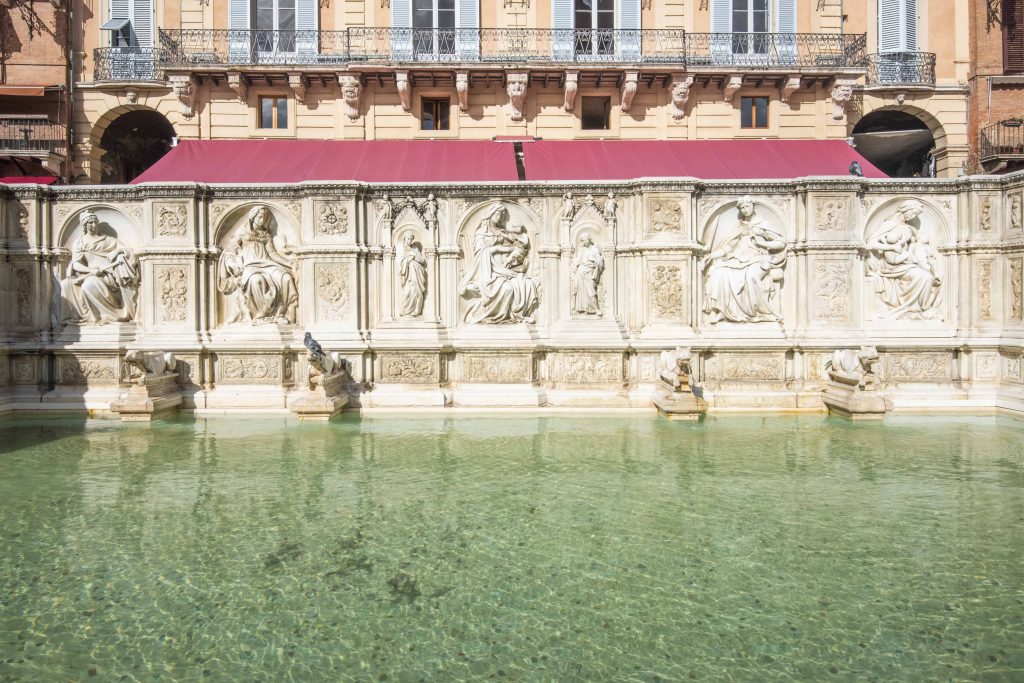
Fonte di Follonica
Hidden in a beautiful green valley outside the walls, the Follonica fountain takes its name from the fullones (fullers) who worked there, pounding cloth with a mixture of urine, chalk and ammonium nitrate to clean it.
The fountain, built in the thirteenth century, was one of the most important in Siena and had plenty of water. It was regularly damaged by landslides from the hill above it, which eventually buried it. Recently the fountain has been the subject of excavations which have brought it back to light, also revealing the remains of dichrome striped decoration.
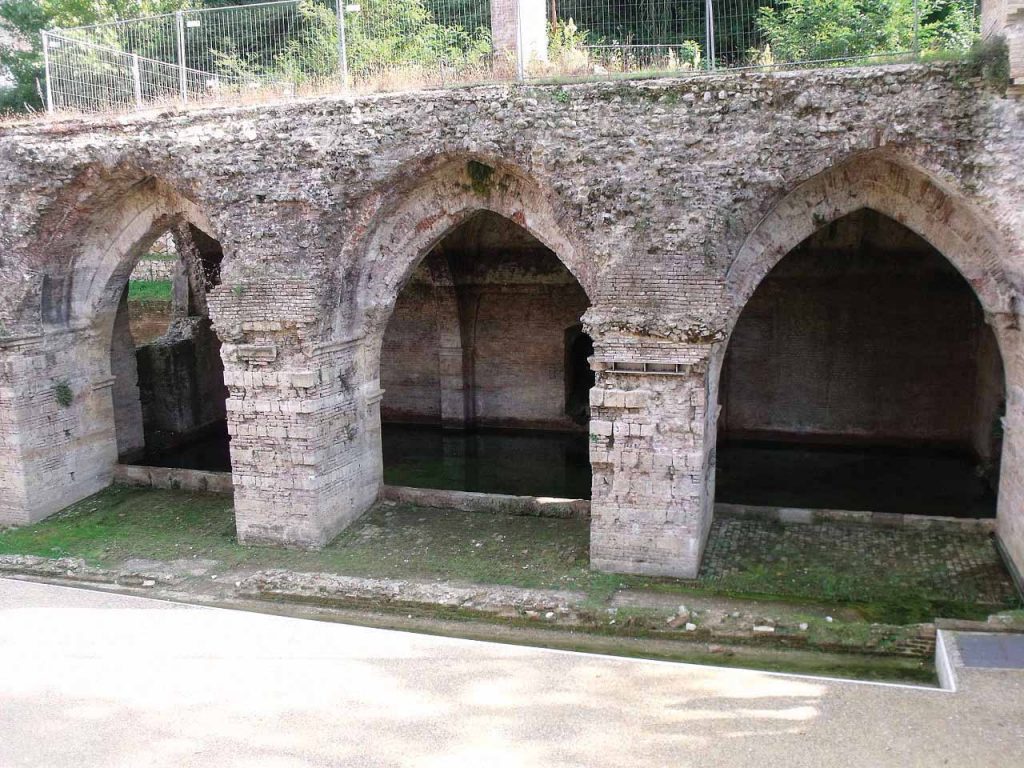
Fonte Nuova (New Fountain)
The site for the building of this fountain was chosen by Giovanni Pisano, Duccio di Buoninsegna and Sozzo di Rustichino in the late thirteenth century. The fountain is fed by its own aqueduct, which gathers and channels the water to the area outside Porta Camollia.
The fountain has two basins: the upper one was for domestic uses and the lower one was used by washerwomen to launder clothes. This second basin has sloped sides, which were useful for rubbing the clothes clean.
The washerwomen’s work was long and hard, especially in winter, but going to the fountain to wash clothes was also one of the few times when the women could socialise freely, even if this often degenerated into arguments and bickering.
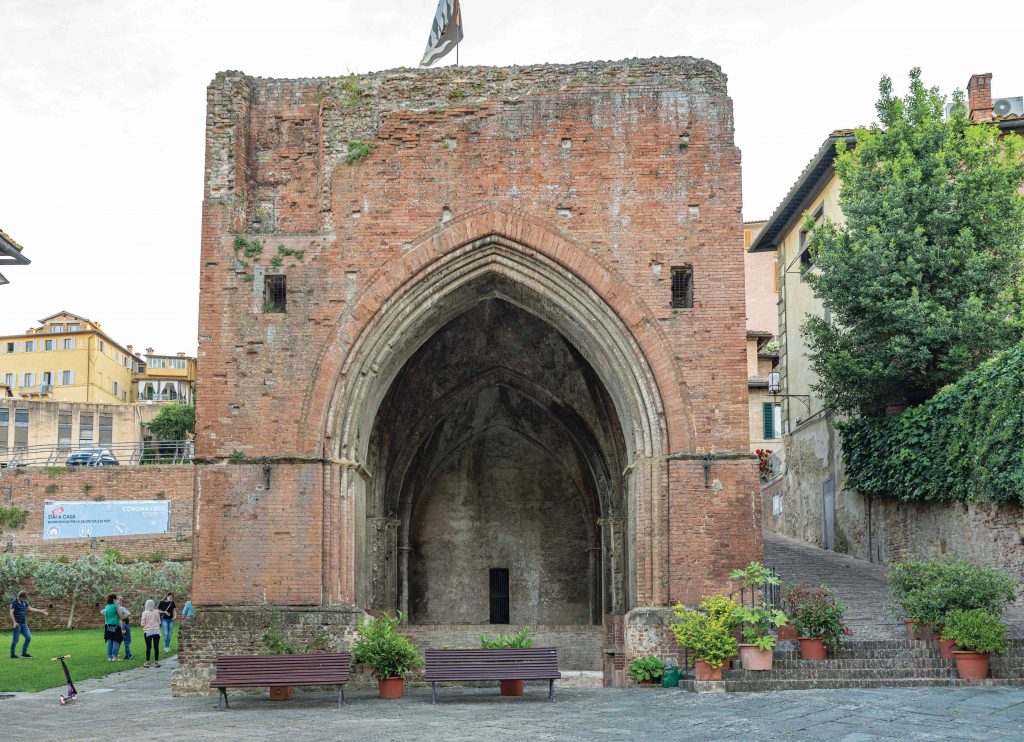
Fonte di Pescaia
This fountain was built outside the city walls in 1247, as a plaque on the front of it notes. Some of the water from its aqueduct went to feed the fish-ponds in the Pescaia valley (pesca means “fishery”), where fish were bred for the people of the city to eat. Now the fountain is home to the Museo dell’Acqua (Water Museum) which uses multimedia to tell the story of Siena’s water and aqueducts.
In the museum you can see how Siena’s complex system of aqueducts works. The aqueduct’s network of underground tunnels, which reached a length of 25 km, required constant maintenance because of the large quantities of chalk in the water, accumulated as it percolated through the rock. The chalk tended to block the pipe that carried the water inside the aqueduct, which had to be cleaned very frequently by hand.
It was the bottinieri who did this work and also did the maintenance and structural work on the tunnels, which were dug through the sandstone.
The bottiniere’s job was vital to life in the city. This historic aqueduct still operates as it did in the Middle Ages, so there is still a small team of bottinieri who maintain the fountains and tunnels.
The aqueducts that are not still used for water can be visited by small groups through the Associazione La Diana, which has worked for years, in association with the Comune di Siena, to promote knowledge of them.
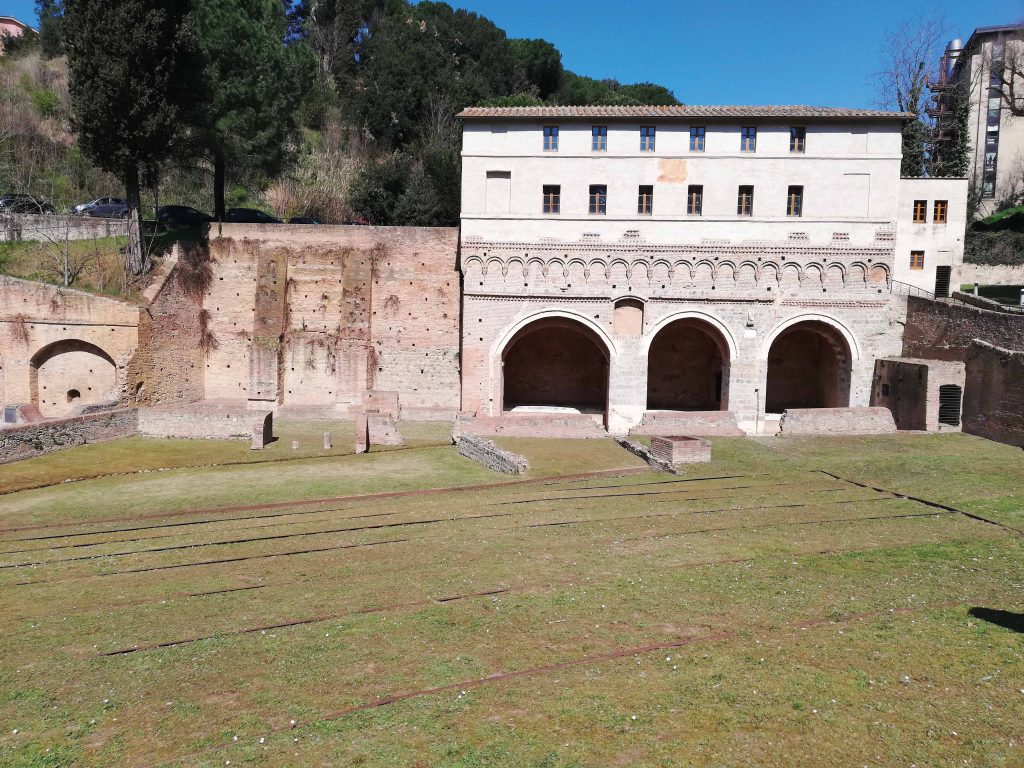
Texts edited by: Martina Dei
Editorial coordination: Elisa Boniello e Laura Modafferi
Photos: Achivio Comune di Siena, Mauro Guerrini e
Sabrina Lauriston
Graphic design: Michela Bracciali
